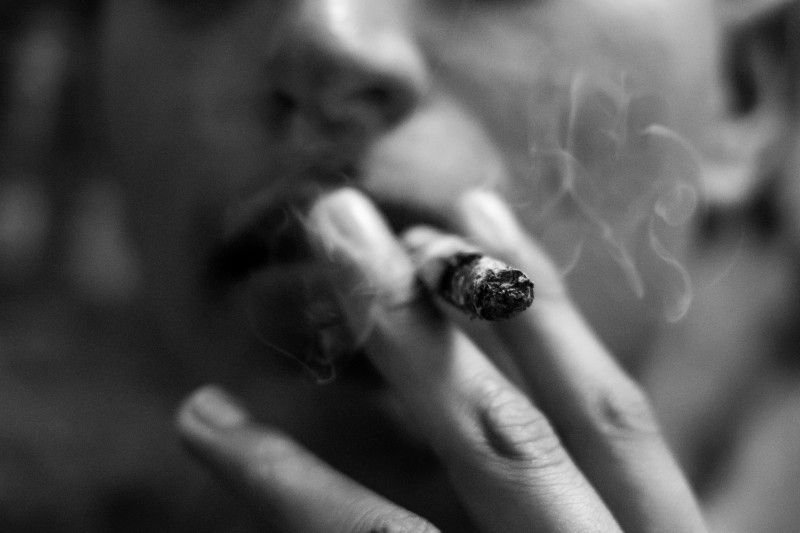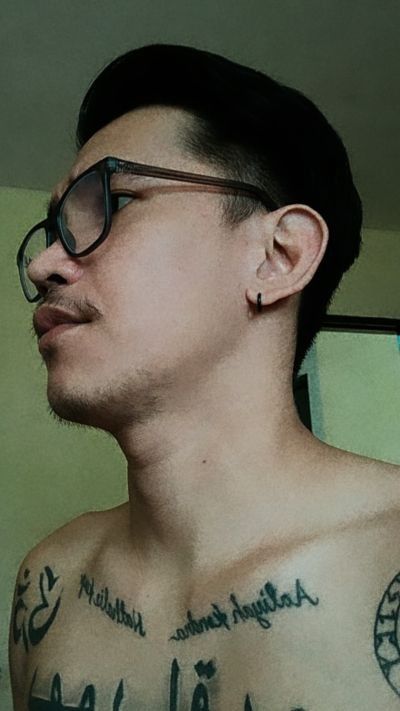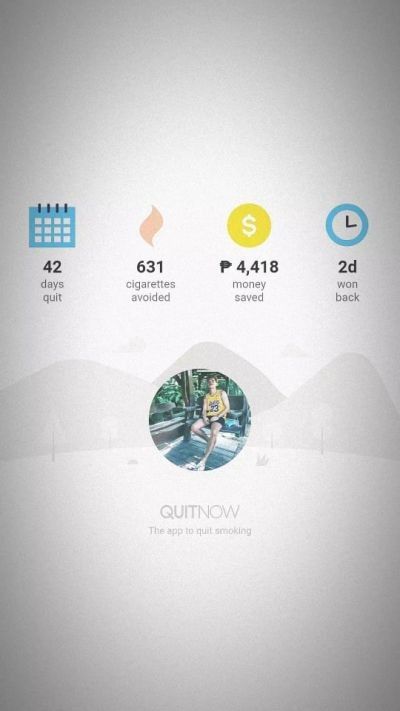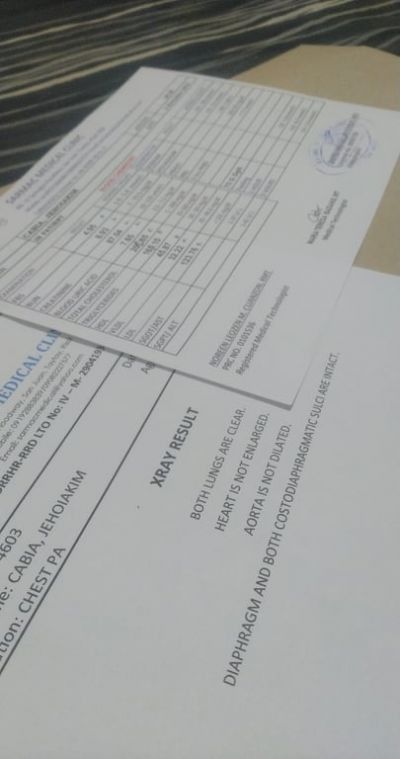Road to ‘zero tobacco’: Smokers who want to quit gain extra support from DOH Quitline

(VERA Files) On the day he was taken to the emergency room of the Cainta Hospital due to hypertension, Jehoiakim Cabia, 28, was told that his smoking was a big factor in the episode.
“Akala ko katapusan ko na nung time na ‘yun… Sabi ko sa sarili ko na once na maka-survive lang ako, ititigil ko na talaga ang paninigarilyo,” said Cabia, who used to smoke more than 15 sticks daily.
(That time I thought it was the end of [my life]… I told myself, once I survive this, I will really stop smoking.)
According to the United States (U.S.) Mayo Clinic, smoking tobacco is one of the risk factors of high blood pressure. Chemicals from tobacco can “damage the lining of [the] artery walls” which could “increase the risk of heart disease.”
Forty-two days after quitting cold turkey on Oct. 20, Cabia, a smoker for 15 years, still endures chest pains and shortness of breath at night?a cost he is willing to pay for better health.
“Nag-udyok sa ’kin para tumigil is ‘yung kalusugan ko,” he told VERA Files in an interview. (What made me quit is my health.)
“Pinili ko na talagang mag-stop at ‘di ko na inisip ‘yung kaadikan ko sa pagyoyosi dahil feeling ko once na ipagpatuloy ko pang magyosi baka kung ano na’ng mangyari sa ’kin.”
(I already chose to stop and I did not think anymore about my addiction to smoking because I felt that if I continue smoking, something might happen to me.)
The first few days after quitting were the toughest, said Cabia, a non-fungible token (NFT) player. In the first week, he said he was on bed rest because he was feeling listless and tired although he was not doing any physical activity. He also could not sleep.

Forty-two days after quitting cold turkey on Oct. 20, Jehoiakim Cabia says he still endures chest pains and shortness of breath at night, which are symptoms of withdrawal from tobacco smoking. Cabia was a smoker for 15 years.
Those are withdrawal symptoms common among smokers who are just starting to quit, according to Robert Garcia Jr., project manager of the Department of Health (DOH) Quitline, a smoking cessation helpline based at the Lung Center of the Philippines in Quezon City.
Some smokers who quit, Garcia said, typically experience headaches, increased appetite, irritability, and persistent coughing. Others get intense cravings for nicotine that could result in relapse, or returning to the habit of smoking.
“Sometimes they (smokers) are thinking that they're getting sick because of quitting cigarettes, which is not true. It's the other way around actually; your body is adjusting to the ‘normal’ without nicotine,” Garcia explained.

Cabia, 28, monitors his progress through a mobile application called Quit Now. He uses this as a guide to know how long he has been smoke-free.
In the course of the coronavirus disease 2019 (COVID-19) pandemic, from March 2020 to July 2021, Garcia said Quitline received 447 calls, mostly from male smokers. Of this number, 145 callers enrolled in the smoking cessation program.
“Because of the fear, most of them (smokers) know the health crisis affects the lungs,” he said.
‘Easier said than done’
Smoking cessation, however, is “easier said than done,” Garcia said. Since the goal is to be “tobacco-free,” smokers have to face their addiction amid heightened stress factors such as being confined at home. The Philippines is among the countries that imposed the longest lockdown in the world.
A smoker’s dependence often dictates the amount of support needed, according to Garcia. It is measured by how many sticks they consume every day and their pattern of smoking.
Cabia considers himself a “highly dependent” smoker. “Kapag bored ako, dun ako nag-smoke, habang nagkakape sa umaga, pagkatapos kumain, habang dumudumi,” he recalled.
(When I was bored, that’s when I’d smoke, while having coffee in the morning, after meals, while defecating.)
“Kahit may sakit ako, naninigarilyo ako dati. Kahit madaling araw, gumagawa ako ng paraan para lang makapagyosi,” he added.
(Even when I was sick, I’d smoke. At dawn, I’d find ways to be able to smoke.)
To manage his cravings, Cabia turned his attention to exercising, eating healthy foods, drinking water, or gnawing sweets. “S’yempre dasal palagi na makayanan ko lahat ng pagsubok na nangyayari sa akin,” he said.
(Of course, praying always that I’d hurdle all the challenges that come.)

Cabia shared that the first two weeks in cold turkey were the toughest. His doctor told him to get a medical check-up, and he said, the results did not show any complications.
Cabia refuses to switch to vaping products. “I think mahihirapan ako kung paunti-unti kaya ginawa ko biglaan na lang agad … dahil baka ma-high blood pa ulit ako at ma-stroke.”
(I think it is more difficult if I quit gradually, that's why I did it abruptly … because I might have high blood again and suffer from a stroke.)
Regin Rory Salazar, 35, echoes Cabia’s sentiment on using vapes as a way to quit. A smoker for 18 years since high school, Salazar tried in 2019 to smoke JUUL pod, a “closed-system vapor product” that is rechargeable through a USB port.
The device, a second-hand gift from his boss, led him to use both tobacco cigarettes and vape at the same time.
“Nung una, mas madalas pa din akong mag-tobacco pero nung medyo nasanay na ako sa vape, unti-unti ko na tinigilan tobacco, hanggang sa once a month na lang mag-tobacco,” he said.
(Initially, I still smoked tobacco more often but when I got used to vape, I gradually stopped smoking tobacco, until I used it only once a month.)
“Ang sama na ng lasa ng tobacco after mo masanay sa vape,” he added, saying that the flavors mixed in the pod enticed him. “Lasang usok na lang sya… Hindi tulad noon na parang ang sarap kada hithit.”
(Tobacco tastes awful once you get used to vape. It tasted like smoke … unlike before when it tasted so good with every puff.)
With vape, he used to order virginia tobacco, strawberry, mango, and cola flavors. Each cost about P250 to P300, roughly around the same price as one pack of tobacco sticks, and lasted for only two to three days.
Salazar said that while the device helped him quit tobacco, it made him switch to another addictive product. The pod contained 5% nicotine salt, which may have approximately 40 milligrams of nicotine per milliliter of juice, or an equivalent amount of nicotine delivered in one to three packs of cigarettes, according to an article in the Mayo Clinic website.
Realizing the bad effects of smoking and vaping on his health, Salazar said he made a “silly promise” to himself that when he loses or breaks his device, he would stop smoking. And in March this year, he turned smoke-free.
“Maraming beses din ako nag-try mag-quit sa tobacco noon,“ he said. “Pero hangga’t andiyan ‘yung vape, hindi ko talaga titigilan. Kaya buti na lang din nawala siya,” Salazar said.
(I tried many times to quit smoking. But while the vape is there, I really won’t stop. That's why it’s good that I lost it.)
Like Cabia, Salazar learned how to handle his cravings by “keeping his mouth busy” and exercising. “I keep thinking na sayang [ang] nasimulan mo,” he told VERA Files.
Different smoker, different experiences
Garcia emphasized that cessation is different for each smoker?some can handle quitting cold turkey, others cannot.
This is why Quitline personalizes advice to its clients. The seven-member team is composed of trained medical professionals and people management experts.
Quitline provides a range of options such as counseling, behavioral support and, very recently, nicotine replacement therapies (NRTs) to smokers who want to quit. They do not recommend vaping or other heated tobacco products, Garcia said, because of the lack of evidence to prove that these tools really help in smoking cessation.
“If there's nicotine, then we will not be addressing the addiction to nicotine,” he pointed out.
When asked how nicotine patches differ from shifting to vaping, Garcia said, “It (NRT) is being monitored… and then it will be tapered.”
“If a smoker is consuming less than 10 sticks a day, the smoker can start with 15 milligrams of nicotine patches. But if the smoker is consuming more than a pack or a pack (20 sticks) a day, then the doctor can prescribe the highest dose of nicotine replacement therapy,” Garcia explained.
In June 2021, the World Health Organization (WHO) turned over P41-million worth of nicotine patches to four hospitals, including the Lung Center of the Philippines, for tobacco users aged 20 to 50 years old with comorbidities and are ready to quit. The project is part of the global agency’s Access Initiative for Quitting Tobacco.
The therapy program is prescribed and guided by a medical doctor and, Garcia said, it is meant to help with withdrawal symptoms and cravings that “will most likely cause the relapse of the smoker.”
Dr. Rabindra Abeyasinghe, WHO Representative to the Philippines, said, “The addition of the Nicotine Replacement Therapy (patches) will be a boost to the Department of Health’s efforts in addressing the negative health impacts caused by tobacco use.”
From an average of 15% to 18% quit rate with only behavioral support, Garcia hopes the introduction of free NRTs can help patients who experience intense cravings or withdrawal symptoms.
Although Quitline recommends quitting cold turkey, Garcia said some smokers still prefer gradual reduction. Those who have decided on a “Quit Day” have two weeks to prepare themselves for “zero tobacco.”
“You really have to address the mental challenges before they can quit smoking,” Garcia said, noting that quitting requires determination and confidence.
For Cabia, quitting has taken a toll on his mental health. He would sometimes have anxiety and panic attacks, but he has come to manage them with support from his family.
“Umiiwas na lang din ako sa mga taong nagyoyosi kasi simula nung nag-quit ako iba na amoy sa ’kin ng usok. Ang sakit na sobra sa ilong,” he said.
(I just avoid people who smoke because since I started quitting, the smoke smells different. It hurts on the nose.)
--
VERA Files is put out by veteran journalists taking a deeper look at current issues. Vera is Latin for “true.”


















